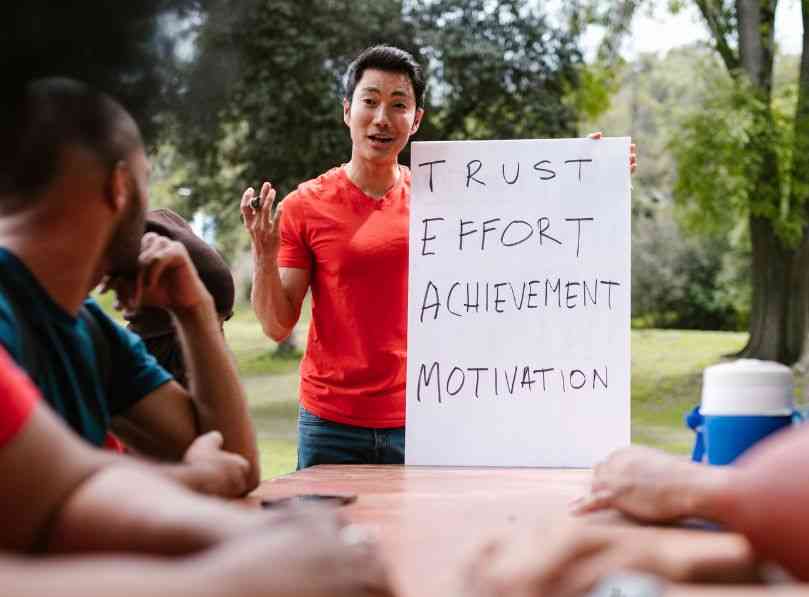How Do We Develop Employees’ Leadership Skills and Competencies?
Written by Salary.com Staff
May 30, 2023

One of the ultimate goals when hiring new employees is to have them reach their full leadership potential one day. Developing these leadership skills and competencies can be a challenge though. As this is the case, you need to find out which methods work best for you.
In this article, we will discuss how you can foster the leadership skills and competencies that employees need for success. We will also dive into the different strategies that you can use. So, let’s start by looking at how you can identify leadership competencies and skills gaps.
Identifying Leadership Competencies and Skills Gaps
Developing leadership skills and competencies in employees is key to a successful business. It helps create an encouraging environment for innovative thinking and problem-solving. Productivity increases when this occurs.
The first step in developing employee leadership skills and competencies is identifying any gaps that exist. Assess leadership capabilities such as level of knowledge, skills, attitudes, and behaviors that are vital for successful performance. This helps determine which areas need improvement or additional training.
Providing Leadership Skills Training
Once you identify which areas need improving, you can begin planning how you will provide leadership skills training.
This can include a variety of activities, including:
- Offering training workshops or seminars on leadership topics.
- Inviting outside speakers to share expertise about certain leadership issues.
- Creating online courses or webinars about leadership skills or competencies.
- Providing one-to-one coaching as a way to help employees acquire the necessary skills.
These types of activities are critical to the success of developing employees’ leadership skills and competencies. Consider alternative training methods too and tailor them to your own demands. This all culminates in giving employees the tools they need.
Coaching and Mentoring Programs for Leadership Development
Another way of developing your employees’ leadership skills and competencies is through coaching and mentoring programs. A program such as this helps employees recognize their strengths and weaknesses. It also provides guidance on how they can improve their performance, become better leaders, and contribute to a positive work environment.
Coaching and mentoring programs can prove useful in developing interpersonal skills too. These skills are essential for any successful leader.
Mentoring can also allow employees to pick up valuable insights from professionals with leadership experience. This helps aid decision-making when it comes to knowing which are the best practices for reaching solutions to problems.
When considering which coaching and mentoring program is best for your organization, here are some features to look out for:
- Professional coaches who specialize in leadership development.
- Mentors who possess a wealth of experience in the field.
- Content that is structured to provide an objective view of challenges that face the organization.
- Tools that allow you to be able to measure progress over time.
- A platform that allows for coaches/mentors and employees to have meaningful interactions.
As you can see, coaching/mentoring programs give employees an ideal opportunity to develop leadership skills and competencies. This is due to the insights and experience they gain from experts in their field.
Rotational Job Assignments to Build Leadership Skills
To develop leadership skills and competencies in employees, you can implement job rotations into their schedules. Rotations give employees the chance to try their hand at different roles within your team. This facilitates the learning of new skills and various job functions.
For example, you may want an employee from sales to improve their leadership skills and competencies. A job rotation with this employee could involve shifting them through other departments such as operations, customer service, or any other related area. During this rotation, the employee will gain insights. With these insights, they can discover new ways of working and apply them to their primary role.
Rotational job assignments encourage critical thinking. This is a great way for employees to build leadership skills. As well as this, it can lead to improvements in taking ownership of tasks at hand, communicating with other departments, and having greater confidence in themselves. When this occurs, they will be on the right path to developing leadership skills and competencies.
Encouraging Collaboration and Teamwork to Enhance Leadership Abilities
Collaboration and teamwork are other great ways of enhancing leadership abilities. When employees work together to achieve a common goal, it can be incredibly rewarding for all involved. As well as this, it can give some employees the chance to lead a team and develop strategies to motivate team members.
When collaboration occurs, employees can practice:
- Listening and understanding different perspectives, needs, and objectives.
- Acknowledging others’ ideas to build trust and respect among members of the team.
- Taking initiative and being responsible for their actions.
- Encouraging feedback from other team members and providing constructive criticism.
- Implementing changes and adjustments when necessary.
Practicing this helps employees become better leaders. By improving areas of their personal and professional lives, employees can engage with others with confidence. Doing this effectively helps employees motivate others while coming up with creative solutions that benefit the organization.
Conclusion
When it comes to developing your employee’s leadership skills and competencies, you need to provide them with access to resources and encourage them to take ownership of their training. You can incorporate any of the methods above into your strategy but ensure that you tailor it to specific employees for it to be most effective. If done correctly, you will build a team that has the ability to develop the skills and competencies necessary to become successful leaders in the future.


Download our white paper to further understand how organizations across the country are using market data, internal analytics, and strategic communication to establish an equitable pay structure.
Insights You Need to Get It Right












